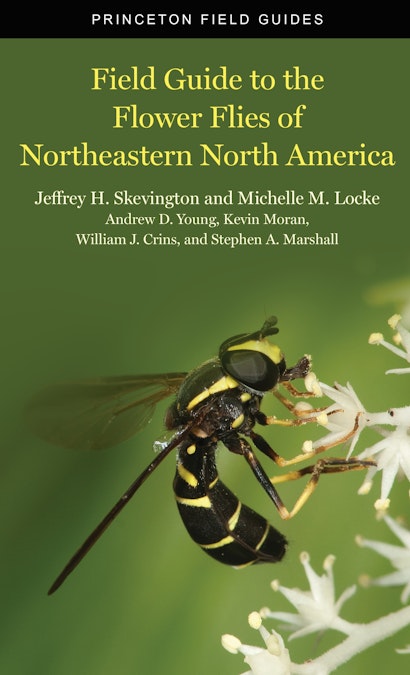This is the first comprehensive field guide to the flower flies (also known as hover flies) of northeastern North America. Flower flies are, along with bees, our most important pollinators. Found in a varied range of habitats, from backyard gardens to aquatic ecosystems, these flies are often overlooked because many of their species mimic bees or wasps. Despite this, many species are distinctive and even subtly differentiated species can be accurately identified. This handy and informative guide teaches you how.
With more than 3,000 color photographs and 400 maps, this guide covers all 416 species of flower flies that occur north of Tennessee and east of the Dakotas, including the high Arctic and Greenland. Each species account provides information on size, identification, abundance, and flight time, along with notes on behavior, classification, hybridization, habitats, larvae, and more.
Summarizing the current scientific understanding of our flower fly fauna, this is an indispensable resource for anyone, amateur naturalist or scientist, interested in discovering the beauty of these insects.
· 3000+ color photos (field and museum shots)
· Multiple images per species, with arrows highlighting key field marks
· Grayscale images showing the actual size of the insect
· Range maps for each species
· Information on size, identification features, abundance, flight times, and more
Awards and Recognition
- Winner of the National Outdoor Book Award in Nature Guidebooks
Jeffrey H. Skevington is a research scientist and Michelle M. Locke is a collection management technician with Agriculture and Agri-Food Canada at the Canadian National Collection of Insects, Arachnids, and Nematodes (CNC). Andrew D. Young is a postdoctoral fellow with the California Department of Food and Agriculture at the California State Collection of Arthropods. Kevin Moran is a doctoral candidate at Carleton University. William J. Crins is retired and spent much of his career working with the parks and protected areas program of the Ministry of Natural Resources in Ontario. Stephen A. Marshall is professor of entomology at the University of Guelph.
"This is a beautiful book, big enough to include multiple photographs of all the known, and until recently, a few unknown flower flies, yet small enough to be carried into the field in a largish pocket or small satchel."—Randy Lauff, The Canadian Field-Naturalist
"This is an excellent work resulting from considerable effort on the part of all the authors, supported by the contributions of numerous photographers. As the first popular treatment of any family of North American Diptera, it has set a remarkably high standard to follow. It should encourage interest there in Syrphidae and in Diptera in general."—Peter Chandler, Entomologist's Gazette
"This book should certainly increase popular interest in these most beautiful and biologically significant flies in the study area covered, and hopefully even further afield. . . . The book promises to be very useful for specialists as well as general naturalists, especially for those involved in education and conservation."—Andrew Wakeham-Dawson, Entomologist's Monthly Magazine
“This richly illustrated book, the first flower fly field guide for North America, is a major accomplishment. An advancement in scientific knowledge, it will greatly interest naturalists and raise awareness of this ubiquitous group.”—John Klymko, Atlantic Canada Conservation Data Centre
“Making a quantum leap for the field, this work is a very important contribution to the knowledge about flower flies in North America. The great number of photographs together with detailed distribution maps, descriptions, and phenology make this a significant book for all who are interested in flower flies, pollination, ecology, outreach, and conservation. There is nothing comparable.”—Martin Hauser, California Department of Food and Agriculture


